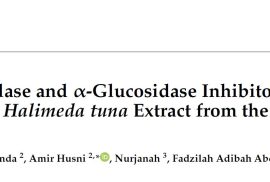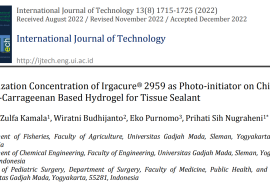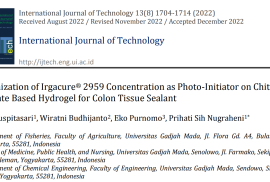In Vitro α-Amylase and α-Glucosidase Inhibitory Activity of Green Seaweed Halimeda tuna Extract from the Coast of Lhok Bubon, Aceh
Mohamad Gazali, Odi Jolanda, Amir Husni, Nurjanah, Fadzilah Adibah Abd Majid, Zuriat and Rina Syafitri
Abstract
Seaweed belongs to marine biota and contains nutrients and secondary metabolites beneficial for health. This study aimed to determine the antidiabetic activity of extracts and fractions of green seaweed Halimeda tuna. The H. tuna sample was extracted with the maceration method using methanol and then partitioned using ethyl acetate and water to obtain ethyl acetate and water fractions. The methanol extract, ethyl acetate fraction, and water fraction of H. tuna were tested for their inhibitory activity against α-amilase and α-glucosidase. The methanol extract and the fractions with the highest inhibitory activity were phytochemically tested and analyzed using gas chromatography–mass spectrometry (GC-MS). The results showed that the ethyl acetate fraction (IC50 = 0.88 ± 0.20 mg/mL) inhibited α-amylase relatively similar to acarbose (IC50 = 0.76 ± 0.04 mg/mL). The methanol extract (IC50 = 0.05 ± 0.01 mg/mL) and the ethyl acetate fraction (IC50 = 0.01 ± 0.00 mg/mL) demonstrated stronger inhibitory activity against α-glucosidase than acarbose (IC50 = 0.27 ± 0.13 mg/mL). Phytochemical testing showed that the methanol extract and the ethyl acetate fraction contained secondary metabolites: alkaloids, flavonoids, steroids, and phenol hydroquinone. The compounds in methanol extract predicted to have inhibitory activity against α-amylase and α-glucosidase were Docosanol, Neophytadiene, Stigmasta-7,22-dien-3-ol,acetate,(3.beta.,5.alpha.,22E), Octadecanoic acid,2-oxo-,methyl ester, and phytol, while those in the ethyl acetate fraction were n-Nonadecane, Phytol, Butyl ester, 14-.Beta.-H-pregna, Octadecenoic acid, and Oleic acid.









